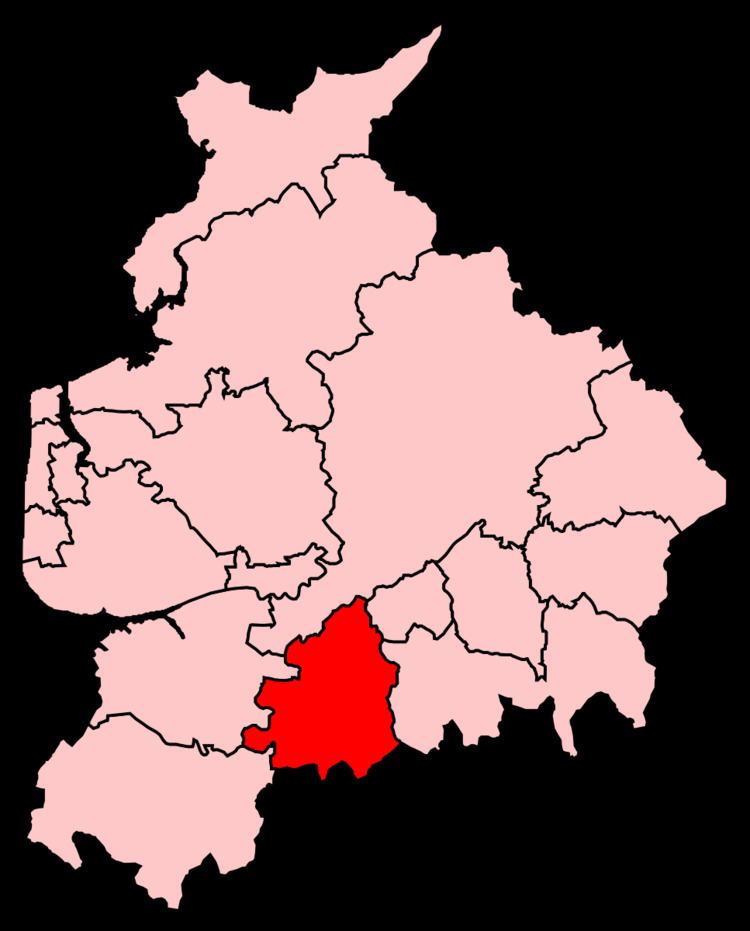Electorate 71,333 (December 2010) Created 1885 | Population 94,932 (2011 census) | |
 | ||
Chorley is a constituency represented in the House of Commons of the UK Parliament since 1997 by Lindsay Hoyle of the Labour Party.
Contents
Boundaries
1885–1918: The Sessional Division of Leyland Hundred, and part of the Sessional Division of Leyland.
1918–1950: The Municipal Borough of Chorley, the Urban Districts of Adlington, Croston, Leyland, and Withnell, the Rural District of Chorley, and in the Rural District of Wigan the civil parishes of Haigh, Parbold, Worthington, and Wrightington.
1950–1983: The Municipal Borough of Chorley, the Urban Districts of Adlington and Leyland, and the Rural District of Chorley.
1983–1997: The Borough of Chorley, and the District of West Lancashire wards of Parbold and Wrightington.
1997–2010: The Borough of Chorley.
2010–present: The Borough of Chorley wards of Adlington and Anderton, Astley and Buckshaw, Brindle and Hoghton, Chisnall, Chorley East, Chorley North East, Chorley North West, Chorley South East, Chorley South West, Clayton-le-Woods and Whittle-le-Woods, Clayton-le-Woods North, Clayton-le-Woods West and Cuerden, Coppull, Euxton North, Euxton South, Heath Charnock and Rivington, Pennine, and Wheelton and Withnell.
Chorley constituency consists of the majority of the borough of Chorley. As well as the central market town of Chorley itself, the seat extends into southern Lancashire rural hinterland with three major villages and minor villages.
Chorley's expansion is assured with the building of Buckshaw Village, an urban development sprawling over the former Royal Ordnance Site east of Leyland in the seat.
Following their review of parliamentary representation in Lancashire leading up to the United Kingdom general election, 2010 the Boundary Commission for England created a new seat of Wyre and Preston North in the central part of the county, which caused "knock-on" effects elsewhere. Chorley constituency was one of the largest in electorate at the start of the review, which was a factor in the alterations to both its own composition and the changes to surrounding constituencies. These changes took away from the seat all the areas to the west of the M6 motorway, namely Croston, Eccleston, Bretherton and Mawdesley. These move to South Ribble.
History
Since the 1945 general election Chorley has proved to be a bellwether, changing hands between Labour and the Conservatives, however this pattern was broken in 2010. Chorley itself is Labour's strongest area in the seat, with the rural hinterland and smaller towns and villages more inclined to vote Conservative.
Members of Parliament
The Member of Parliament for the seat since 1997, Lindsay Hoyle of the Labour Party, is a Deputy Speaker of the House of Commons.
Elections in the 1910s
Elections in the 1910s
General Election 1914/15:
Another General Election was required to take place before the end of 1915. The political parties had been making preparations for an election to take place and by July 1914, the following candidates had been selected;
